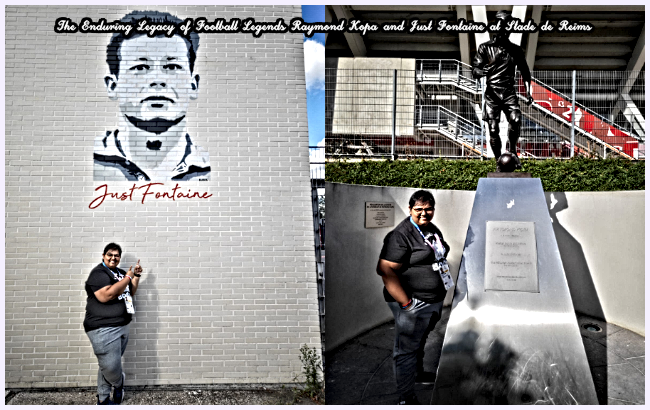The Enduring Legacy of Football Legends Raymond Kopa and Just Fontaine at Stade de Reims
Football is more than just a game. It is a passion that unites people from all walks of life, transcending borders and cultures. And at the heart of this beautiful game are the players who have left an indelible mark on the sport. Two such players are Raymond Kopa and Just Fontaine, who played for Stade de Reims in the 1950s.
But Kopa and Fontaine were more than just players. They were pioneers, artists, and dreamers who turned the ordinary into the extraordinary. Their story is not just about football, but about rising from humble beginnings, overcoming the odds, and leaving a mark on the world that time cannot erase.
The Rise of Raymond Kopa
Raymond Kopa was born in 1931 in Noeux-les-Mines, a small town in northern France. His parents were Polish immigrants who worked in the coal mines. Kopa’s childhood was marked by poverty and hardship, but he found solace in football. He played for local clubs and caught the eye of scouts from Stade de Reims.
In 1951, Kopa signed for Stade de Reims and quickly established himself as one of the best players in the team. He was a versatile midfielder who could play anywhere in the middle of the park. Kopa’s skill, vision, and work rate made him a fan favorite, and he helped Stade de Reims win the French league title in 1953 and 1955.
But Kopa’s greatest moment came in the 1956 European Cup final against Real Madrid. Stade de Reims were the underdogs, but Kopa inspired his team with a stunning performance. He scored a goal and set up two more as Stade de Reims took a 2-0 lead. Real Madrid fought back to win 4-3, but Kopa’s performance had captured the imagination of the football world.
The Artistry of Just Fontaine
Just Fontaine was born in 1933 in Marrakech, Morocco. His parents were French, and Fontaine grew up in Casablanca. He began playing football at a young age and quickly showed his talent. In 1950, Fontaine moved to France and signed for Nice.
Fontaine was a striker who had a natural instinct for goal-scoring. He was quick, agile, and had a powerful shot. Fontaine’s style of play was characterized by his artistry and elegance on the ball. He was a joy to watch, and his performances for Nice earned him a call-up to the French national team.
In 1956, Fontaine signed for Stade de Reims, where he formed a deadly partnership with Kopa. Fontaine’s goal-scoring exploits were legendary. In the 1958-59 season, he scored an incredible 44 goals in 38 league games, a record that still stands today. Fontaine helped Stade de Reims win the French league title in 1958 and reach the European Cup final in 1959.
The Legacy of Kopa and Fontaine
Kopa and Fontaine were more than just football players. They were pioneers who paved the way for future generations of players. They showed that football was not just about physical strength, but also about skill, intelligence, and creativity.
Kopa and Fontaine’s legacy lives on at Stade de Reims. The club has a rich history, and Kopa and Fontaine are two of its greatest icons. Their names are synonymous with the club’s success in the 1950s, and they continue to inspire new generations of players and fans.
But Kopa and Fontaine’s legacy extends beyond Stade de Reims. They are remembered as two of the greatest players in French football history. Kopa won the Ballon d’Or in 1958, becoming the first French player to win the award. Fontaine scored 30 goals in 21 appearances for the French national team, a record that still stands today.
Kopa and Fontaine’s story is a testament to the power of football to transcend boundaries and inspire people. They rose from humble beginnings to become legends of the game, and their legacy will continue to inspire future generations of players and fans.

